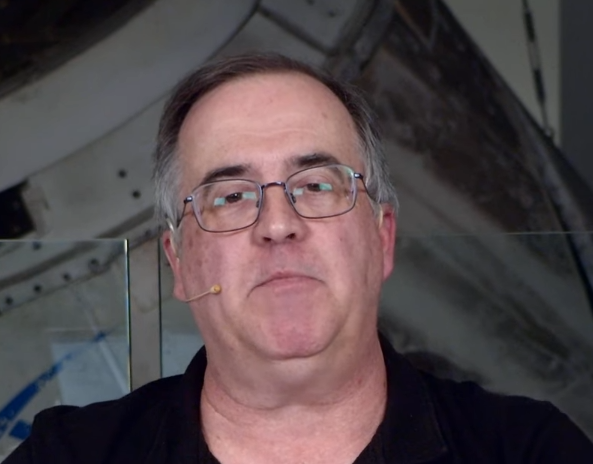Sure did.
- 0 Posts
- 31 Comments

 10·2 months ago
10·2 months agoPlease do, would be fun to follow along and discuss as events unfold.

 33·2 months ago
33·2 months agoYeah, the EV market is fine, just Tesla sales which have dropped some, lowering numbers for the total EV market. Sales continue to be strong for other EV manufacturers, just one brand slowing down for some strange reason… Almost like someone has started to alienate their core customer base…

 85·4 months ago
85·4 months agoKnowing Elon’s past history with wording, he is probably actually donating $45,999,999.99 or $45,000,000.01 just to say the media reports are not true. He never denied donating money, just disputed that exact figure.

 5·4 months ago
5·4 months agoMy prediction is that as pressures mount on all industries, especially food supplies, we’ll start to see large civil unrest leading ultimately to wars which will wipe most of us out first, then famine takes the rest. Agree on a few well off holdouts for a while.

 1·4 months ago
1·4 months agoYeah, Tesla is certainly not the first ones to have this design or issues with it:

 5·5 months ago
5·5 months agoThis has strong Simon Stålenhag \ “Tales from the Loop” vibes.
Any chance you are using a Thunderbolt device such as a network adapter or external drives? I had the issue on a NUC 10 where it would randomly drop the TB devices every few weeks and occasionally appear to be frozen. The latest firmware update finally took care of it.

 21·5 months ago
21·5 months agoQuestion is, how do you keep that from being abused?

 4·5 months ago
4·5 months agoWould you invision that to be similar to something like PBS but fully funded from government sources?

 1·5 months ago
1·5 months agoThis is handled by the inverter and charging modules, some use FPGA chips others use dedicated ASICs, but it doesn’t require anything wild in terms of raw compute power, mostly up to having good algorithms to handle the situations correctly. Nothing more than a modern ICE engine which needs to very precisely manage intake and exhaust cam phasing, ignition timing, intake pressure, and multiple injections per cylinder/cycle along with monitoring a multitude of sensors to keep everything in tolerance. In terms of simplicity, the first automobiles at the turn of the century were electric before the ICE caught on thanks to the advent of the electric starter and limitations in battery technology at the time.

 61·6 months ago
61·6 months agoIt’s about time, quite annoying to hit the limit of your “unlimited” data plan to have it throttled so heavily it is totally unusable.

 31·6 months ago
31·6 months agoNot sure if the /s was left off or this was a serious question.
In the case it was a serious question, the first issue that comes to mind is when you seed clouds for one region, what happens to the next region downwind where the clouds would have rained without intervention? You are just moving the drought, there will still be a difference in the rain pattern somewhere.
Seeding to generate more cloud cover at a global scale introduces a whole host of problems. Firstly, you lower the solar output which then means solar power generation will be less effective. That energy will need to be produced by some means, which right now fossil fuels would be the most likely to take up the deficit, increasing atmospheric carbon output. Then to compound problems further, the reduced solar radiation reaching the surface would have a number of impacts such as plant growth being slowed reducing their CO2 uptake, less moisture being evaporated for precipitation over land masses, wind patterns being changed, and wind speeds reduced which means even further reduction in renewable energy generation. So with today’s technology seeding clouds would end up compounding the issues in the long term and accelerate the already alarming changes.

 7·6 months ago
7·6 months agoWill certainly be interesting to hear the plans. Ready to take any timelines with a mines worth of salt.

 8·8 months ago
8·8 months agoLooks like they are thinking charged particles would be easier to remove with an oppositely charged scrubber and the focus on BWP is due to the unknown health impact of the various brake materials.
The headline is misleading. Roku didn’t get hacked and leak accounts. There were ~15000 customers that had accounts accessed due to credential stuffing. Aka, they reused passwords on other sites that had leaks and hackers tried those credentials on their Roku accounts and got into them.
I was getting moderately excited to test the new branch but seems the rollout has stopped. Although, after watching a few videos on it, there are some impressive improvements but still some fundamental issues to workout for highway driving. Would rather have that smoothed out before getting a deployment to test with.

 2·9 months ago
2·9 months agoAwesome, glad that helped and thanks for the update!

 1·9 months ago
1·9 months agoI wonder if there is something going on with scheduling waits that is impacting the audio process. I would first try upping the CPU units in Processors->Advanced settings for the VM, bump it to something like 200. Otherwise, if you over subscribing your CPU cores, try temporarily dropping the number of cores subbed out to your VMs to match the physical host to see if it helps, since that could help resolve scheduling issues as well.

I like the sentiment, but that is predicated on there being another election under the same rule set which would allow either party to win. If things come to pass with the unitary executive theory outlined in Project 2025 and the dictatorship desires that have already been declared, makes it unlikely votes will work to change political parties going forward…